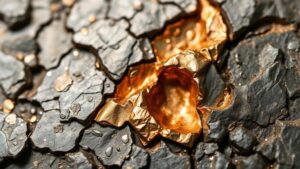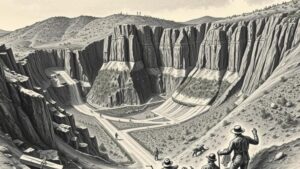Identifying Minerals That Commonly Co-Occur with Copper in Deposits
Identifying Minerals That Commonly Co-Occur with Copper in Deposits
Copper is one of the most significant metals in the global economy due to its versatile properties and wide range of applications, from electrical conductors to components in various alloys. But, copper does not occur in isolation; it is frequently found alongside other minerals in various types of geological deposits. Understanding these co-occurring minerals is essential for efficient resource extraction and environmental management.
Types of Copper Deposits
Copper deposits can primarily be categorized into two types: porphyry copper deposits and high-grade vein deposits. Each type has distinct characteristics and mineral associations.
- Porphyry Copper Deposits: These large deposits are typically found in association with intrusive igneous rocks. They often contain significant amounts of molybdenum and gold along with copper.
- High-Grade Vein Deposits: These deposits are found in a variety of geological settings and are usually richer in copper. They commonly contain minerals such as silver, lead, and zinc.
Commonly Co-Occurring Minerals
Several minerals are frequently found alongside copper, highlighting the complex interplay within mineralogical systems. following are some of the most notable:
- Chalcopyrite (CuFeS2): This is the primary copper mineral in many deposits. It often coexists with iron and other sulfide minerals.
- Malachite (Cu2CO3(OH)2): A secondary copper mineral formed through weathering processes, malachite is often prevalent in oxidized zones of copper deposits.
- Azurite (Cu3(CO3)2(OH)2): Similar to malachite, azurite forms in oxidized conditions and is an indicator mineral of copper-rich environments.
- Molybdenite (MoS2): Commonly found in porphyry deposits, molybdenite is a significant co-product of copper extraction.
- Galena (PbS): In high-grade veins, galena often accompanies copper minerals, typically indicating a lead-zinc-copper mineralization system.
- Bornite (Cu5FeS4): Known as peacock ore, bornite is another important copper mineral, especially in porphyry systems.
Geological and Environmental Implications
The presence of various minerals in copper deposits can influence both extraction methods and environmental management strategies. For example, the coexistence of toxic elements like lead can complicate mining operations due to regulatory concerns. Plus, the mining process must consider the potential environmental impact associated with the leaching of these minerals.
Also, the extraction methods used can vary based on the co-occurring minerals. For example, in porphyry deposits, copper is typically extracted using open-pit mining, followed by flotation to separate copper from other minerals.
Case Studies
Two prominent examples illustrate the diversity of co-occurring minerals in copper deposits:
- Grasberg Mine, Indonesia: This world-renowned copper-gold mine features significant quantities of chalcopyrite and molybdenite. Its complex geology illustrates how multiple metals can be extracted in tandem, maximizing economic benefit.
- Red Mountain Project, Canada: This project is an example of high-grade vein deposits where galena and sphalerite often accompany copper minerals. focus here is on sustainable mining practices due to environmental sensitivities in the area.
Conclusion and Actionable Takeaways
Identifying minerals that co-occur with copper is crucial for optimizing mining strategies and managing environmental impacts. Key minerals such as chalcopyrite, malachite, and molybdenite not only inform resource extraction practices but also signify potential ecological considerations.
Practitioners in the mining and geological fields should:
- Conduct thorough geological assessments to map co-occurring minerals.
- Incorporate advanced analytical techniques, such as X-ray diffraction and scanning electron microscopy, for mineral identification.
- Adopt eco-friendly extraction practices that consider the environmental impact stemming from co-mined minerals.
Through careful study of these co-occurring minerals, industries can not only improve resource recovery but also embrace sustainability in their operations.



